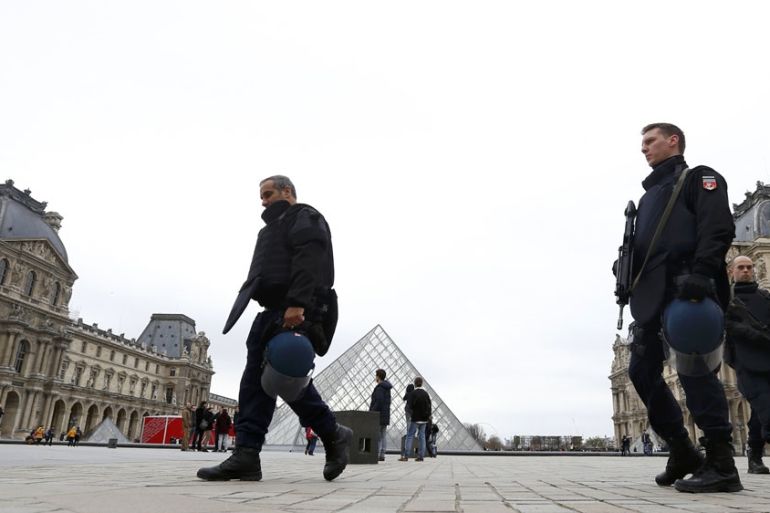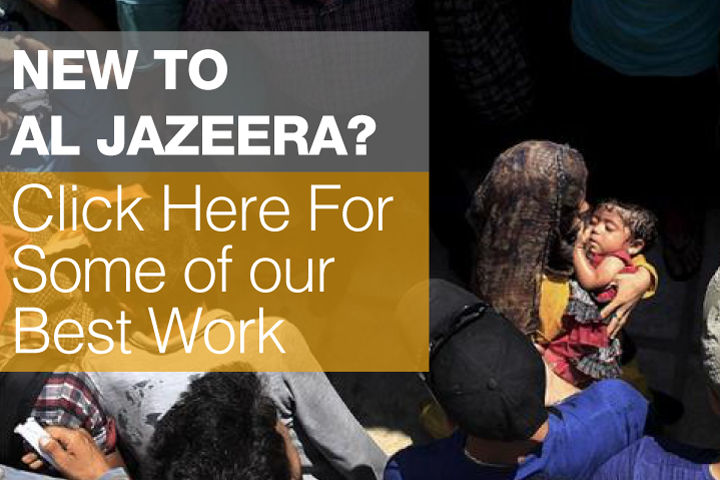Paris and the new normal
The difficulty in monitoring grassroots terrorist activities render many countries fragile to such attacks.

Friday night’s attacks in Paris were a tragic reminder that with persistence and innovation, terrorists can and do strike their “enemies” at a time and place of their own choosing. It may, unfortunately, be the new normal in countries that, until recently, were thought to be immune or nearly so from such attacks.
What is most disconcerting about the Paris attacks is that while they were clearly well-planned and coordinated, they were also relatively low-tech and simple to carry out, which is the reason why counterterrorism officials are so concerned.
Keep reading
list of 4 itemsAfghans say they know little about US killing of al-Qaeda leader
US killing al-Zawahiri in Kabul a violation of Doha pact: Taliban
Who are al-Qaeda?
To conduct an attack such as the most recent one in Paris, terrorists routinely go through a preoperational planning cycle that includes a number of steps to maximise their chances of success.
Risk minimisation and impact maximisation
|
|
| French president calls Paris attacks an act of war by ISIL |
Among others, those steps include identifying targets that are both easy to attack and most likely to draw wide media attention, determining vulnerable gaps in security that can be exploited at each site, the selection of primary and alternate routes to and from each attack site, and rehearsing those routes.
To do this without having their operation compromised by the French intelligence and security services, the attackers most likely adhered to two principles that al-Qaeda perfected over the years: keeping their operational and support cells to the minimum number necessary to ensure a reasonable degree of success, and minimising or completely ruling out the use of electronic communications.
In the Paris attacks, two points stand out that say something about the operational and technical capabilities of the attackers.
First, there was the selection of multiple targets – all of them considered soft – that were hit in rapid succession. That speaks to a significant degree of preoperational planning and coordination right up until the time of each attack.
Second, there was the use of three different terrorist tactics – suicide bombings, drive-by shootings, and a public venue assault that resulted in the taking of hostages. That speaks to their level of training and technical expertise, especially with the construction of explosive vests.
A third point speaks more towards the level of security provided at Stade de France, where two suicide bombers managed to gain access to a public sporting event where President Francois Hollande was also in attendance.
While there is no public information as of yet to indicate the attackers knew the president would be in attendance, the mere fact that a security gap allowed them access is unacceptable.
Finite resources
While Friday night’s attacks in Paris are shocking, particularly in their scope and lethality, they are by no means surprising to counterterrorism officials in France or most other Western countries.
|
The sad reality of the terrorist threat today is we are more likely to see further such attacks, not fewer.
|
By some estimates, nearly 3,000 Europeans have travelled to Iraq and Syria or other conflict zones since 2011 to fight and gain experience with various extremist organisations that include the Islamic State of Iraq and the Levant (ISIL) and the al-Qaeda affiliate, al-Nusra Front.
Of the top 10 countries of origin for those foreign fighters, France is ranked fifth with 1,550; Germany and the UK are ranked ninth and 10th, respectively, with as many as 700 each; and the United States with over 250.
Eventually, some of those foreign fighters return home more radicalised and more dangerous than before, but the intelligence and security services of their countries of origin do not necessarily have the information about their level of radicalisation.
That’s particularly true if they weren’t identified when leaving their countries in the first place. But the reality of the matter is that intelligence and security services have finite resources to track and monitor known or suspected terrorist groups or individuals. And those resources have to be managed according to identified threats.
Also read: Kneejerk finger-pointing after Paris attacks
That is to say, intelligence and security services sometimes fail to protect us from terrorist attacks due to unacceptable oversight or mismanagement of those assets. But they have also foiled many more attacks than terrorists succeeded in carrying out.
Questions to be answered
As with any post-attack investigation, the French intelligence and security services will initially focus on identifying the attackers and any accomplices. Who were they? Were they already known to the French intelligence or security services or other countries? Had they travelled to Iraq, Syria, or any of the many other conflict zones that have become hotbeds of extremism? How extensive was their support network? Where did the weapons and explosives come from?
Key to that investigation will be to determine whether the attacks were more grassroots in nature or whether the attackers received instruction or assistance from abroad.
In pictures: Tears and mourning in France
The day after the attacks, ISIL claimed responsibility, although previous claims to such attacks were proven inaccurate in the past. To date, there have been no known terrorist attacks outside of Iraq and Syria by ISIL or in the immediate area of operations of their several affiliates.
However, since ISIL’s initial call to followers worldwide a year ago to conduct simple attacks in their home countries – in which France was specifically named – that message is believed to have inspired a number of such attacks by lone wolves or small cells operating at the grassroots level in Australia, Canada, the US, Denmark, and France.
Amedy Coulibaly, who killed an unarmed French policewoman and four hostages in two separate Paris attacks in January 2015, appeared in a video uploaded to Twitter immediately after his death, where he was shown sitting beneath an ISIL flag as he pledged allegiance to ISIL leader, Abu Bakr al-Baghdadi.

Al-Qaeda, on the other hand, has a long history of carrying out successful attacks against their “Far Enemy”, or the West, with the last significant one being the July 7, 2005, suicide bombings against London’s transit system. However, in just the last two weeks, al-Qaeda leader Ayman al-Zawahiri has also called on followers worldwide to carry out simple attacks in their home countries.
Last Friday’s terrorist attacks in Paris were horrific, and we mourn for the victims and their families. All the questions will eventually be answered, and a public accounting must be held should it be determined that something could have been done to prevent the attacks.
The citizens of France, not to mention the victims and their families, deserve at least that much. But the sad reality of the terrorist threat today is we are more likely to see further such attacks, not fewer. And that’s what keeps counterterrorism specialists up at night.
Martin Reardon is a senior vice president with the Soufan Group, a New York-based strategic security and intelligence consultancy, and senior director of Qatar International Academy for Security Studies. He is a 21-year veteran of the FBI and specialised in counterterrorism operations.
The views expressed in this article are the author’s own and do not necessarily reflect Al Jazeera’s editorial policy.
